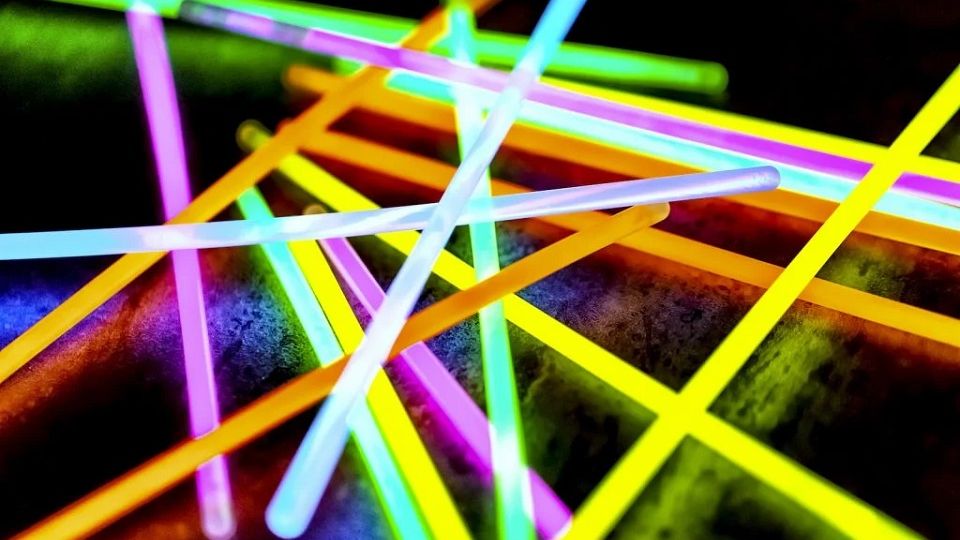
Neon colors often called luminous colors due to their base, amazingly bright lights. Neon, like all colors, is the realistic presentation of light.
Since neon colors are particularly bright, they’re best defined as exceptionally glowing versions of primary and secondary colors. Neon colors can only be chemically designed.
As a result, they’re not composed in the traditional color spectrum and were not found until the last century.
It is significant to note that while artists have been using neon paint and pigments since their creation. The large majority of documented neon art uses neon lighting, making neon light the main focus when looking at the use and history of neon colors in art.
Formation Of The Neon Lamp
About 1795, scientist Henry Cavendish had removed all oxygen and nitrogen from a vessel of air. After doing so, he agreed that there was a small portion of an unknown gas left behind. Scientists Sir William Ramsay and John William Strutt chose to figure out what the gas was.
After numerous experiments, they found that the gas was argon, one of the six naturally occurring noble gases. Ramsay, however, was unsatisfied.
They influenced as there were hidden gasses in the atmosphere, which he teamed up with his partner Morris W. Travers, and they started an attempt to boil argon to find other noble gases.
Noble gases are rare — producing less than 1% of the atmosphere — but the pair were not discouraged. Their efforts proved effective as they found three new noble gases: neon, krypton, and xenon.
Later, in 1896, Daniel McFarlan Moore formed the first fluorescent light tubes, or “Moore Lamps.” These large glass tubes had electrodes secured to the ends.
When the electrodes were powered up, they could ionize the mercury gas inside the tube, producing bright white light. Inventor Georges Claude was the one to take up Moore Lamps to consider noble gases.
In 1910, he successfully used neon gas to produce the first neon lamp: a source of bright red-orange light that, by 1915, had taken America by the hurricane.
While neon was the first gas used to make colored light, not all “neon” lights are related to neon. The name is stuck for the sake of ease, but each noble gas offers a different lamp color when properly iodized.
By compounding these gases and other elements, you can produce limitless patterns of neon color. Neon lamps in changing colors were created after Claude’s experiments and create the neon signs we’re used to today.
Neon Colors Formed By The Different Noble Gases
Explanations for the colors produced from each noble gas vary. Several combinations of these gases and other elements can yield a limitless amount of colors despite the most usual base shades listed.
Neon: Red-orange light
Argon: Violet to pale blue light
Helium: Orange to white light, pink-red
Krypton: Off-white, green, or yellow
Xenon: Gray, blue, off-white, or green
Radon, the concluding naturally occurring noble gas, is said to give off yellow light, but it is not taken into use in everyday neon lights since it’s highly radioactive.
Luminous Pigments
Bob Switzer and his brother Joseph created the first glowing paint. After a severe accident left Bob on bed rest in a dark room for some months, the pair began using backlights to find and experiment with glowing compounds from their father’s pharmaceutical job.
After Bob’s regaining, they sustained their experiments, ultimately mixing the luminous compounds with wood varnish, producing the first black light luminous — or neon — paints.
Neon lighting was seen in Paris in 1910. From then on, it ascended, lighting up cities across the world even during the wars.
Neon art began to escalate in the 30s and 40s. As a symbol of the modern age, neon signs have become progressively popular in busy cities. In the 60s and 70s, neon signs connected in the 40s began flickering out, causing them to be linked with the seedier parts of cities or localities like Times Square, which were advertisement hubs.
Neon began to be seen as a falling economic prospect and lost its early artistic, charming, and fascinating glow.
What Colors Go With Neon?
Maximalist strategy is back in the past with a more trial and eclectic approach to color. Attain psychedelic-style designs by using a neon-on-neon color palette.
Give neon a chic makeover by matching neutral colors, such as biscuit, camel, or gray. It is a particularly effective attitude for larger-scale projects, such as in fashion and insides. These projects can help form a single pop of neon.
Here, peak into three stylish test palettes to make the most of neon colors in your designs. Follow the style instructions below and learn fascinating things about the neon color trend and how to wear neon colors wisely to not look like a glow-stick.
Palette 1: Indian Market
This scheme boosts colors from the bright powder paints used by festival-goers during Holi celebrations in India. Joining bright hot pink with burnt orange, deep red, and bright yellow, this is a warm and cozy palette that would be a great way of leading glow colors into an autumnal design.
Palette 2: Gecko Luminous
Nature is often the best foundation for perfectly balanced color palettes. Here, neon green is joined or attached with orange, cornflower blue, and mustard to pay a compliment to the beautiful colors of green geckos.
If neon is one of your preferred colors, or you are just testing out the trend, it is still a great way to add some cheerfulness and brightness to your summer attire and make you have a fresh look.
Though, whenever picking one of these colors, ensure not to overmix them. Meanwhile, it can be risky in the part that you may look like a three-colored traffic light. Duo these colors with easy and relaxing tones to form a contrast combination.
Use bright neon colors on the part of your body you want to express. Subsequently, once the color looks in that zone, it will certainly attract immediate devotion.

